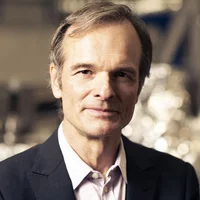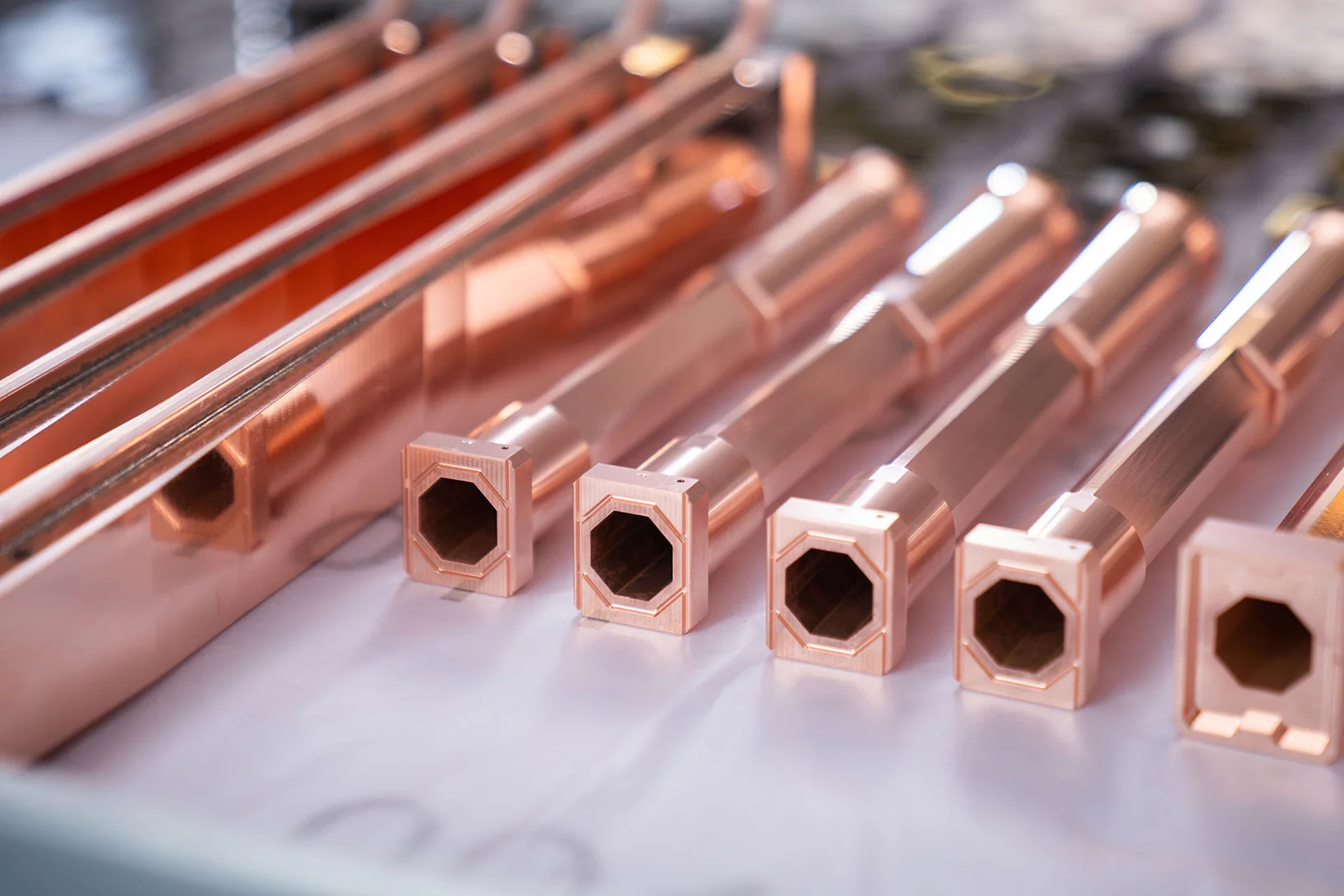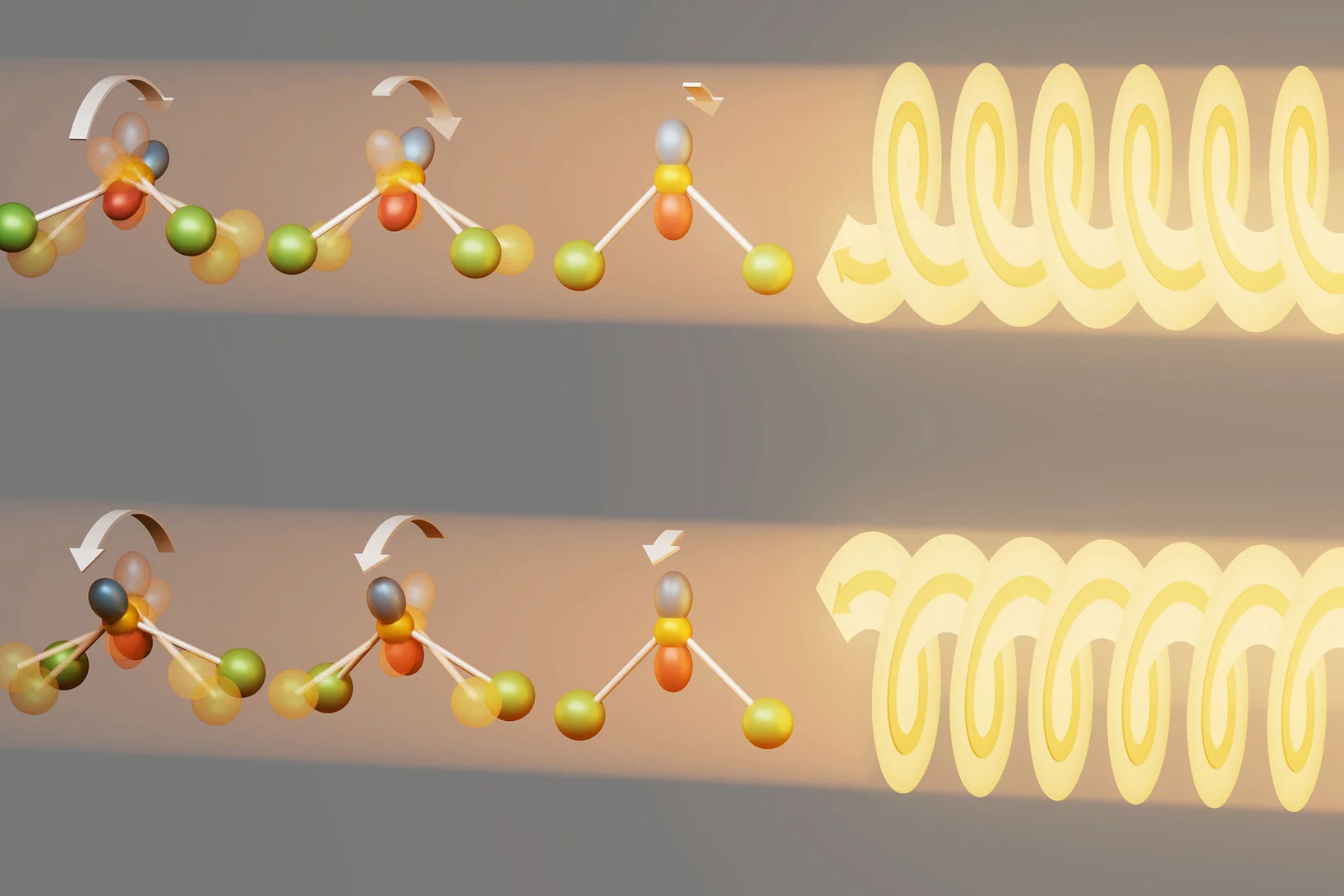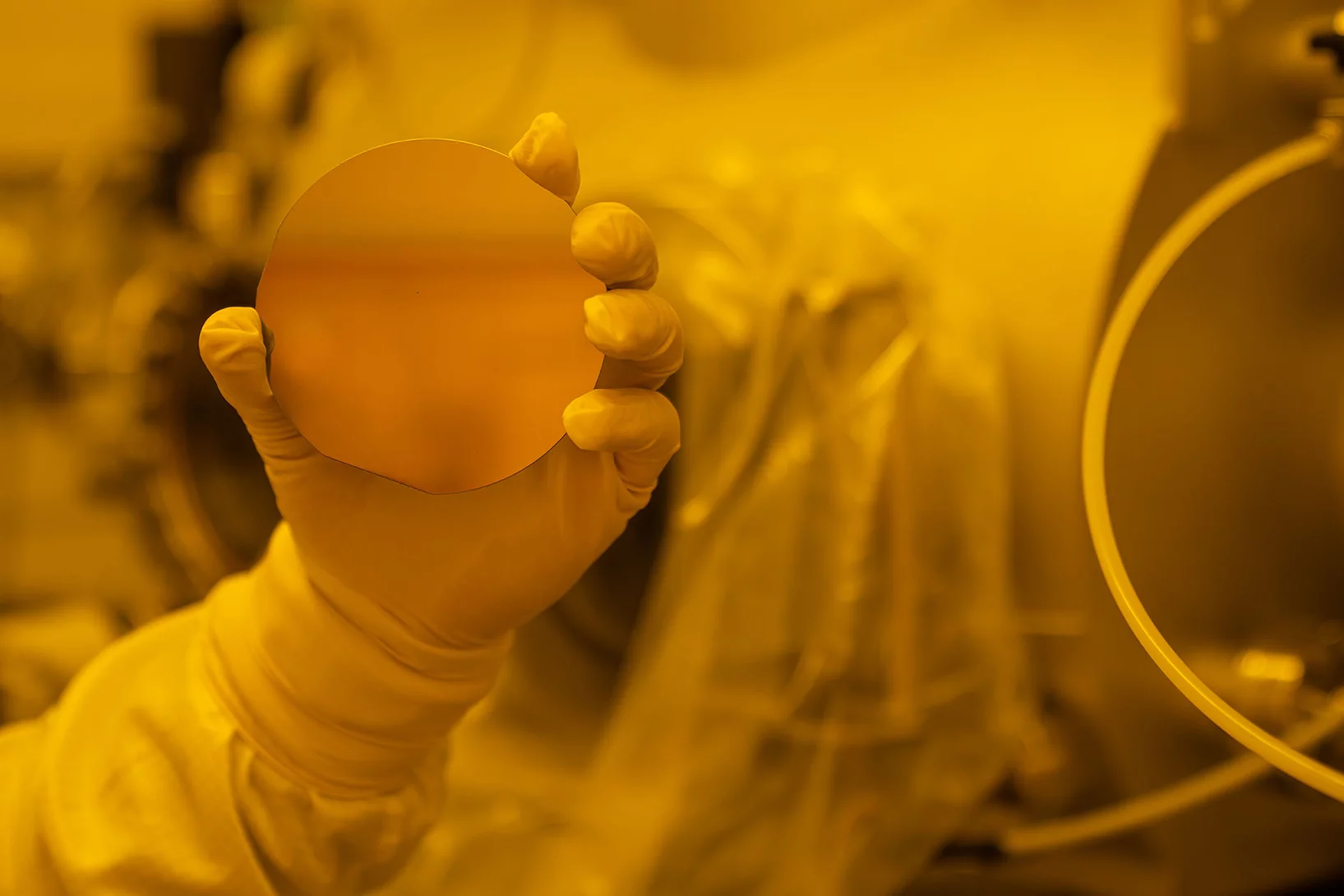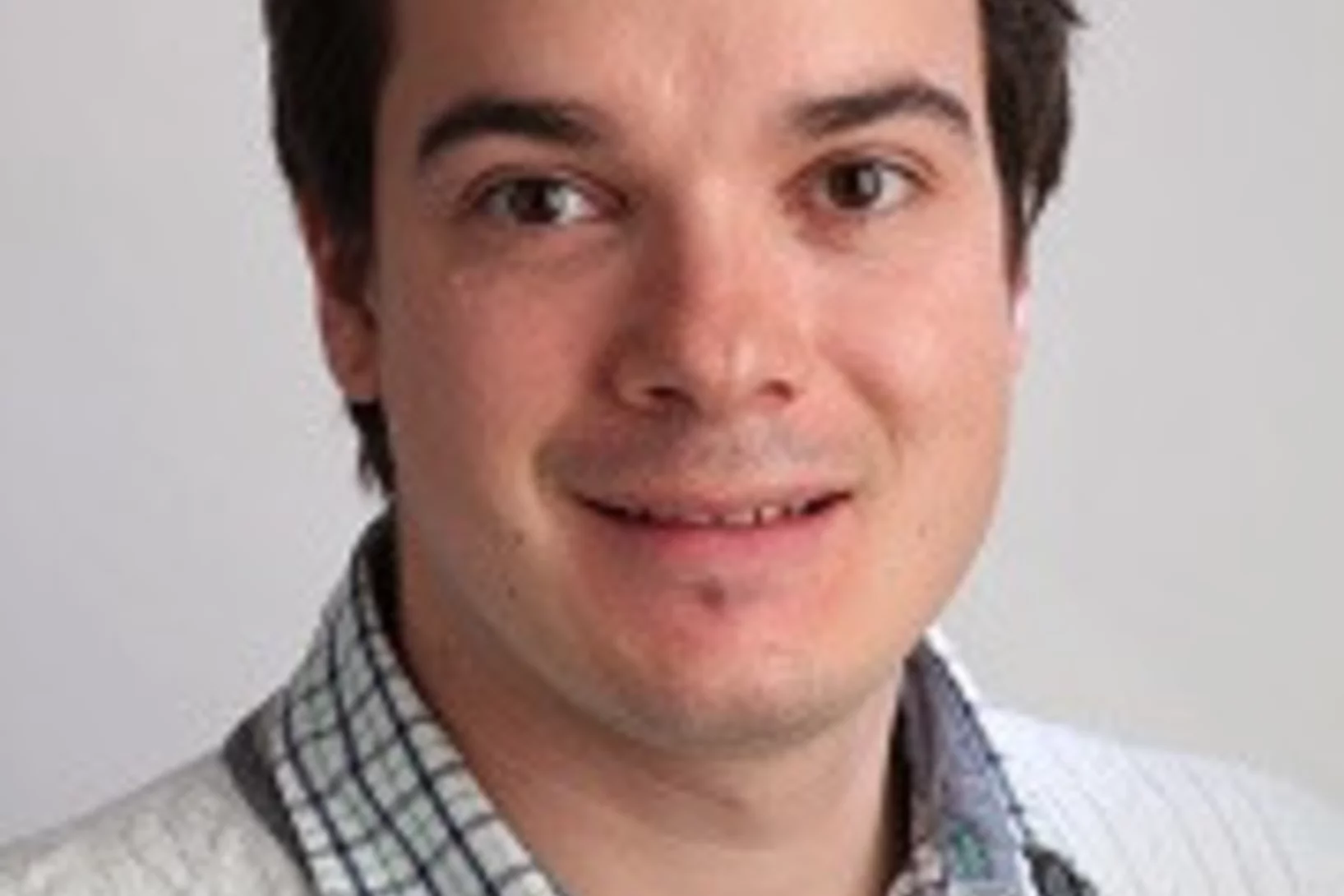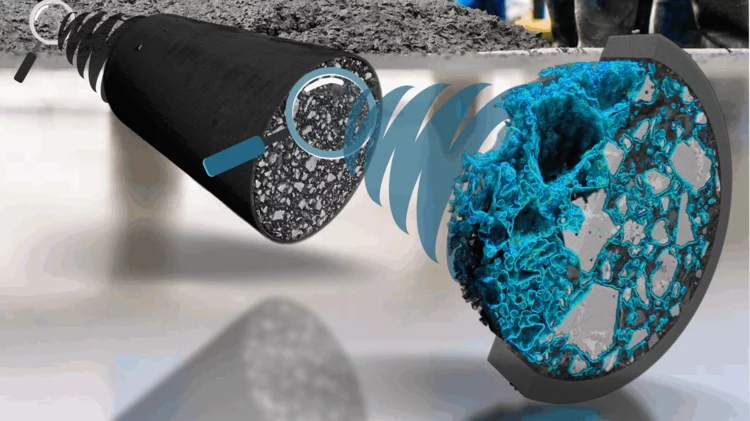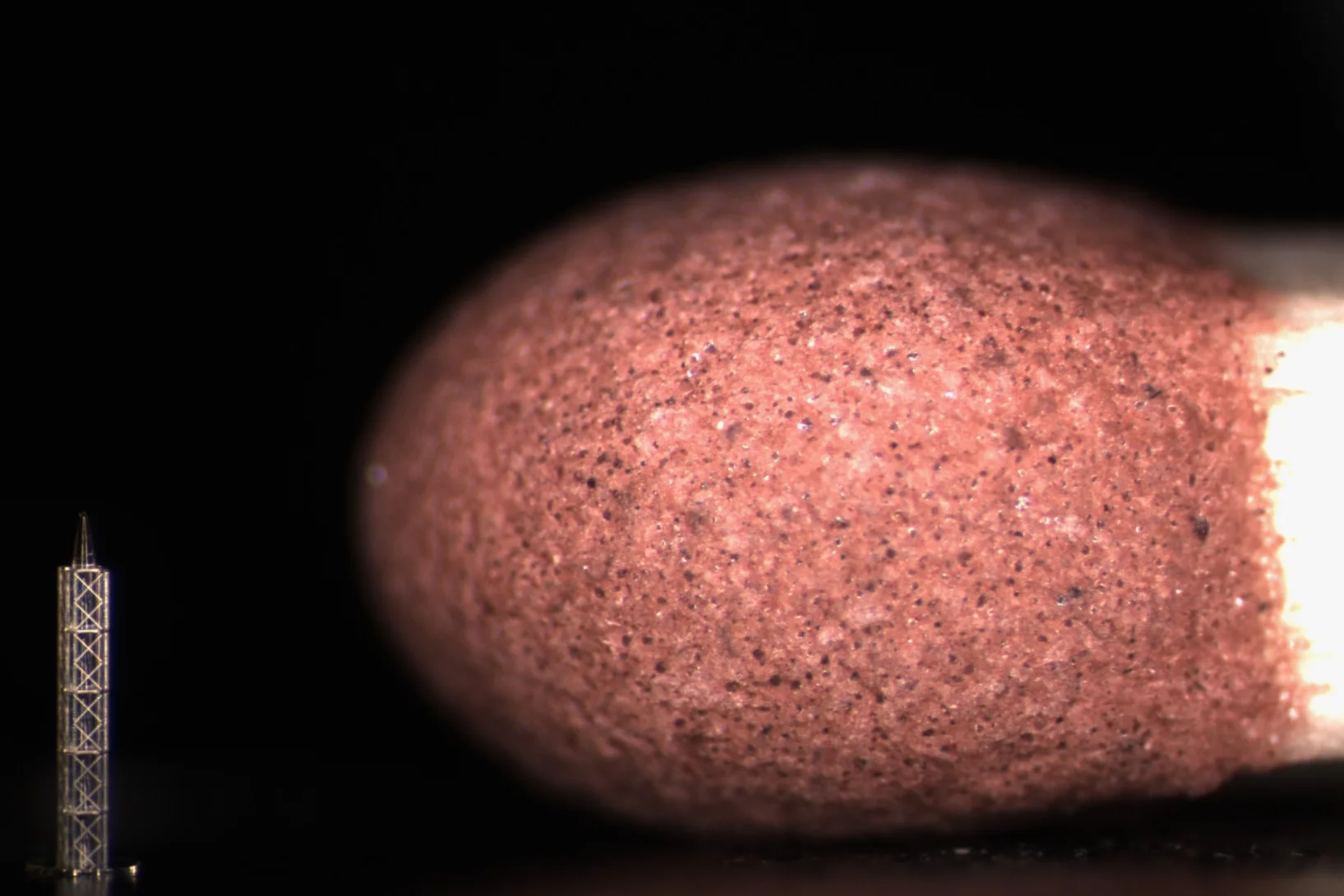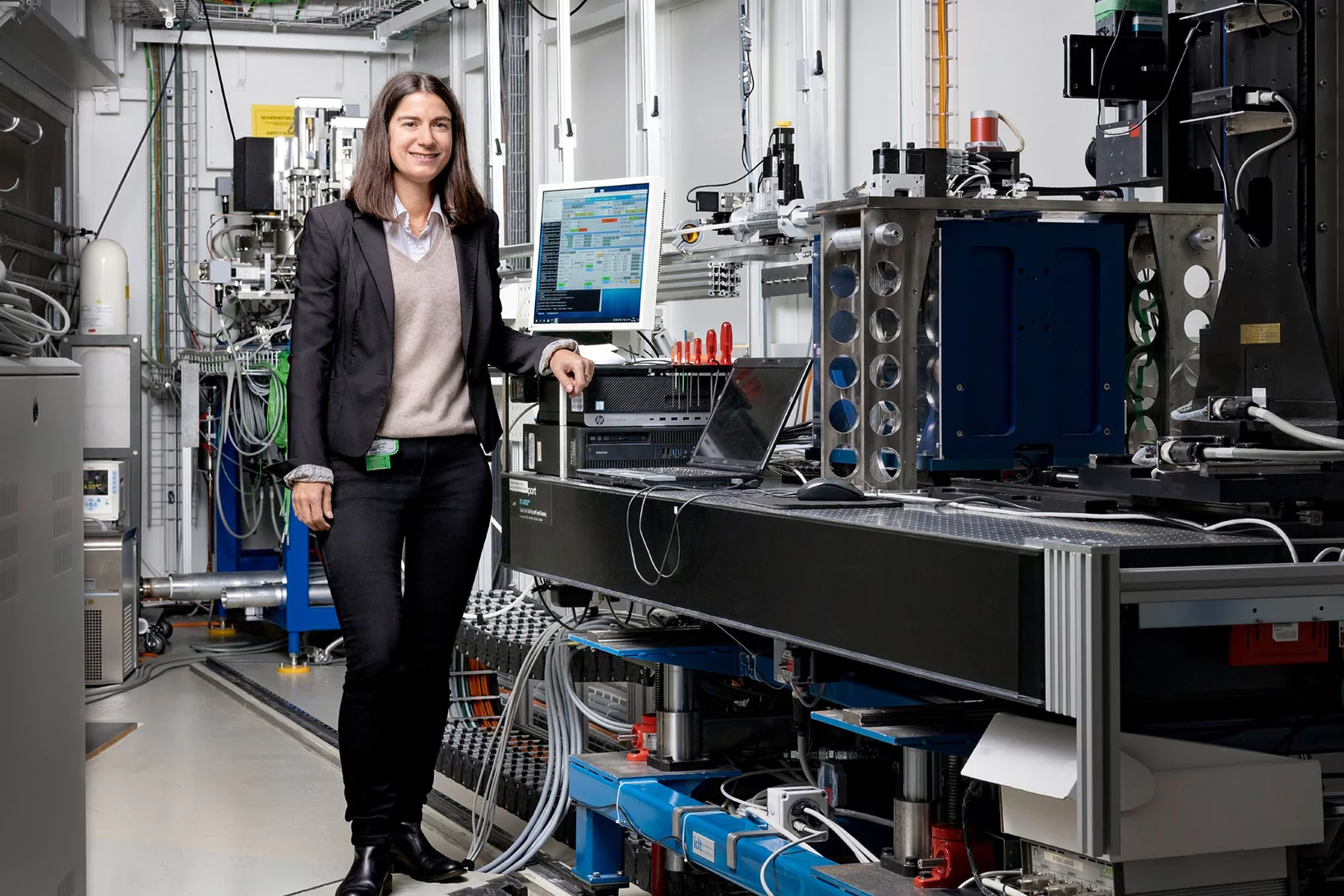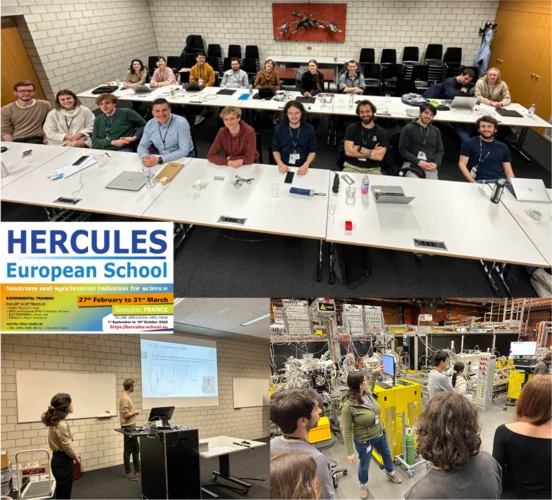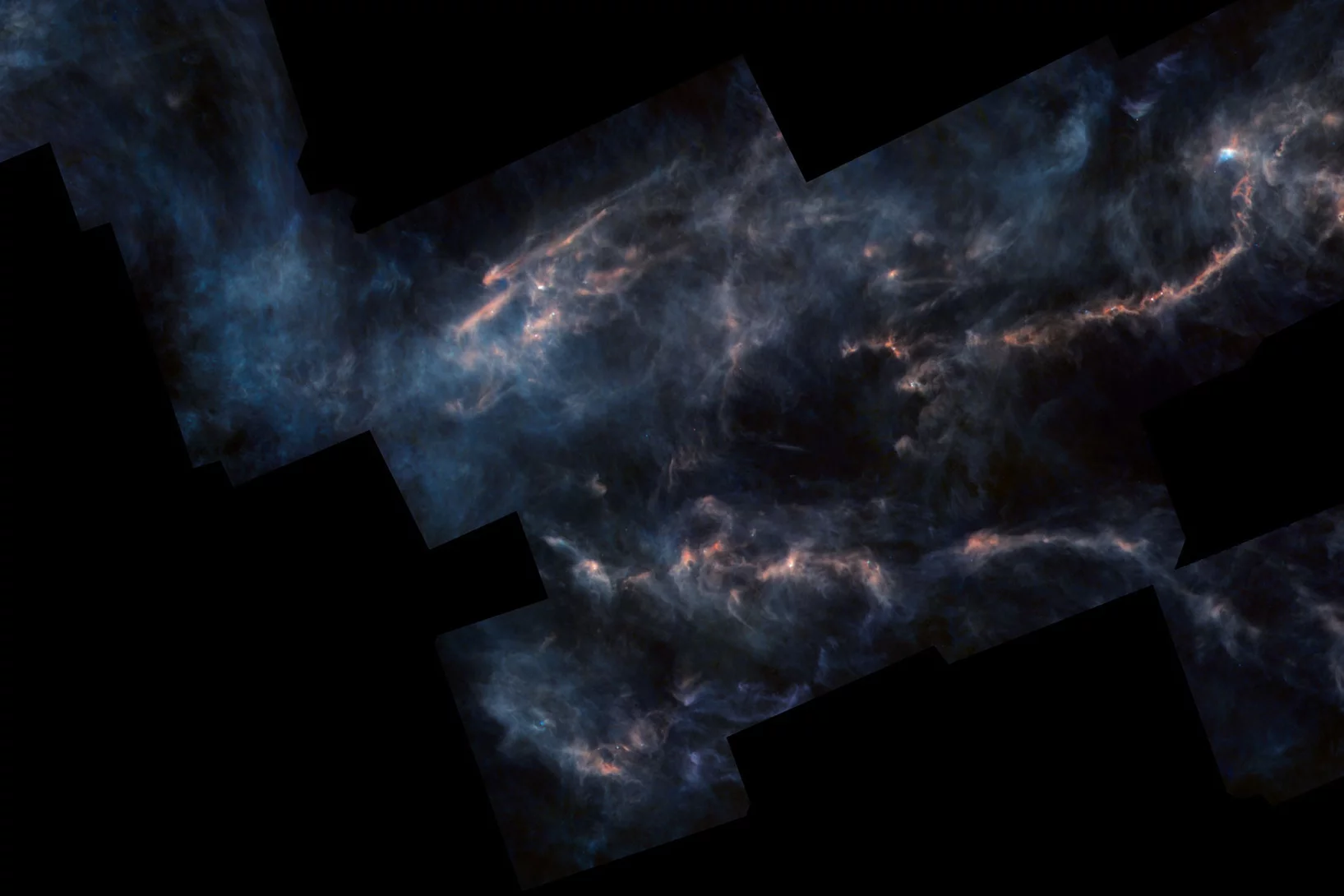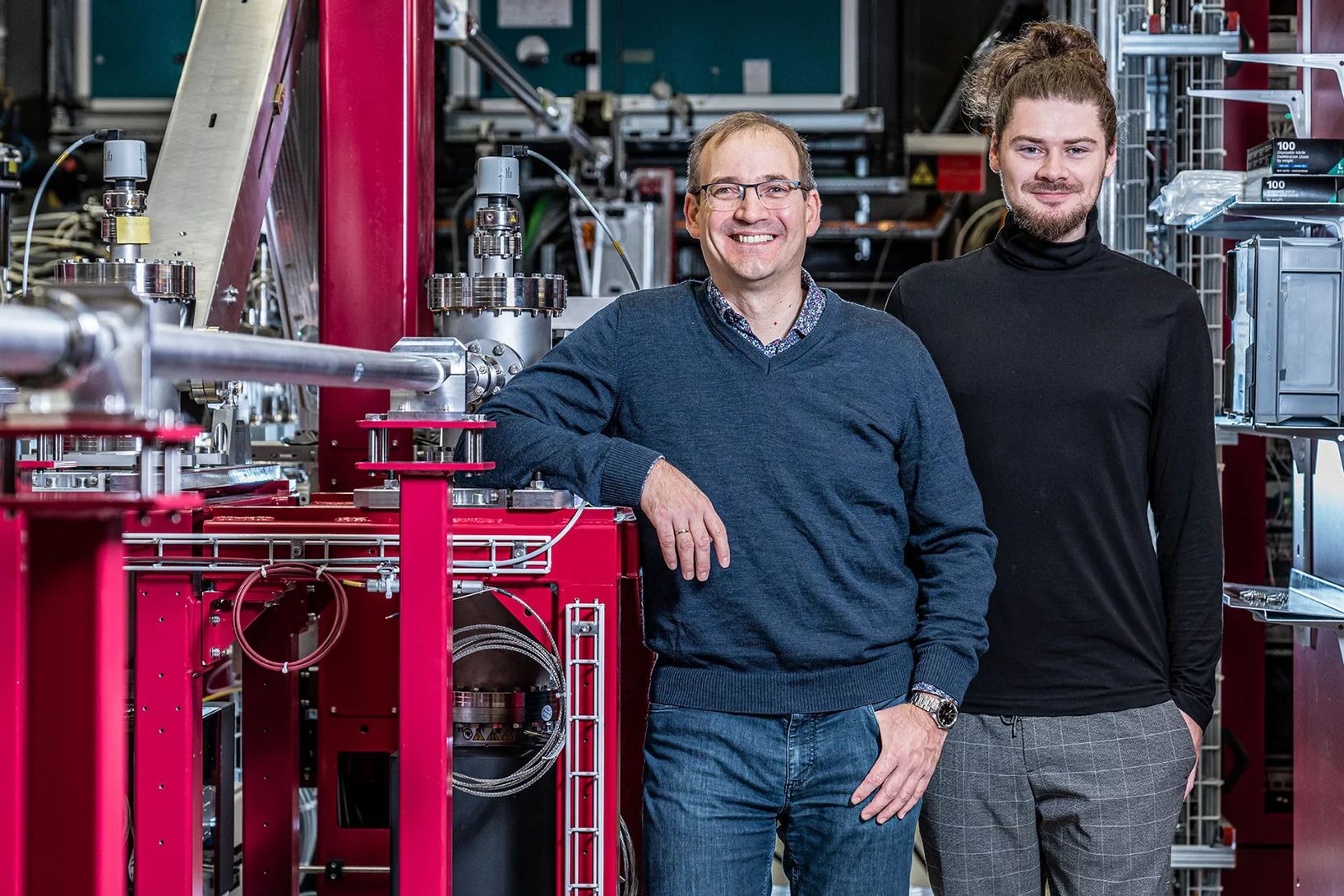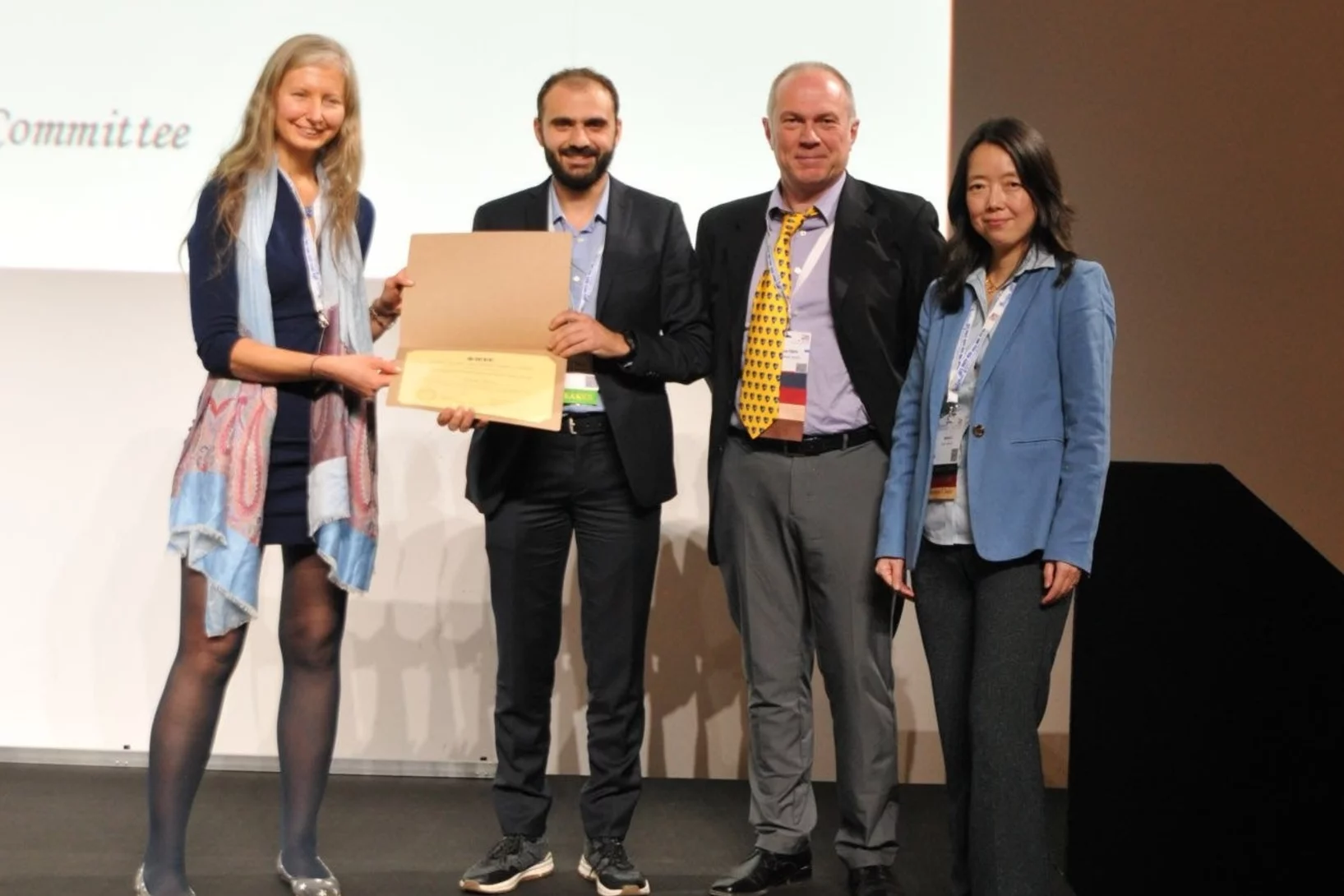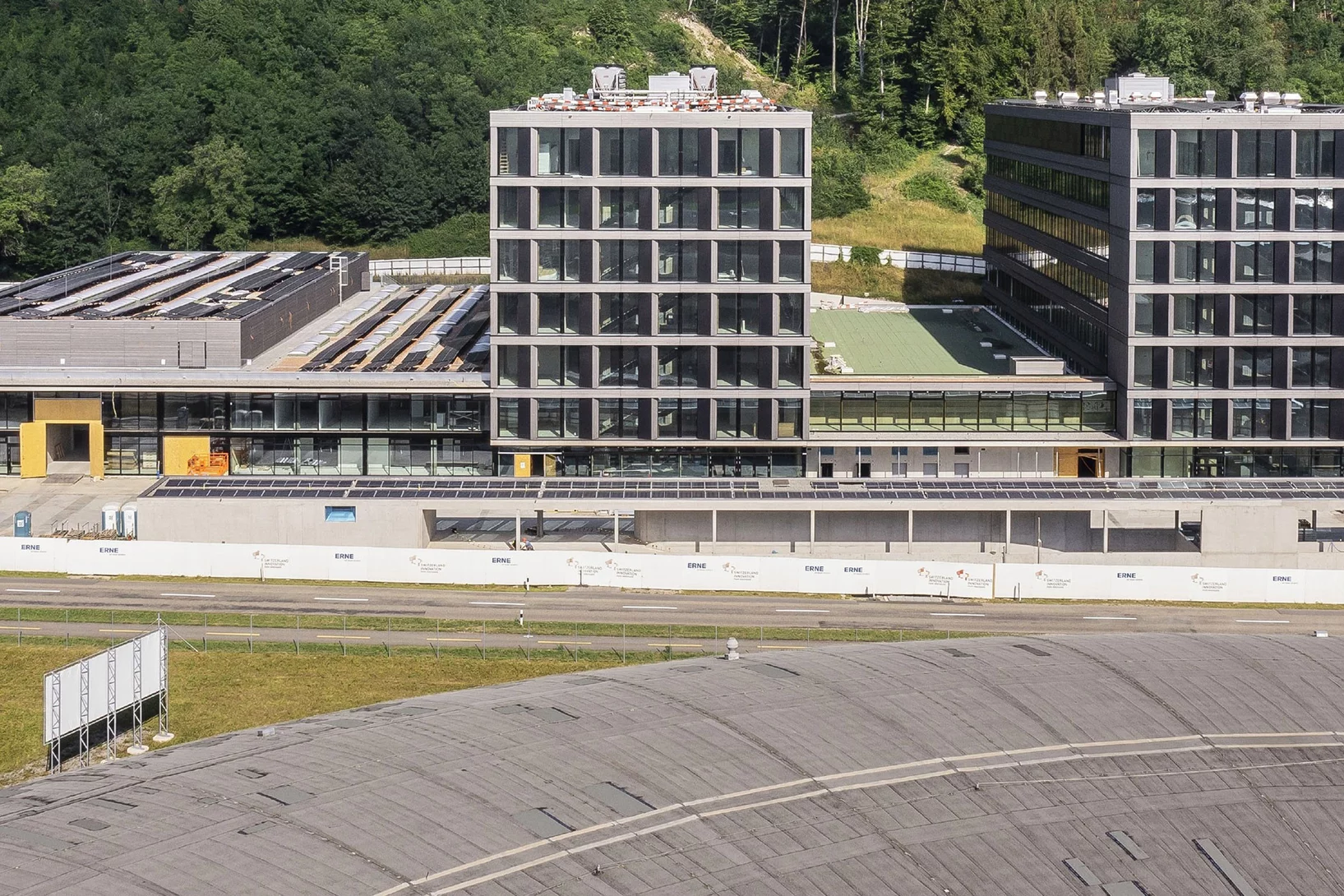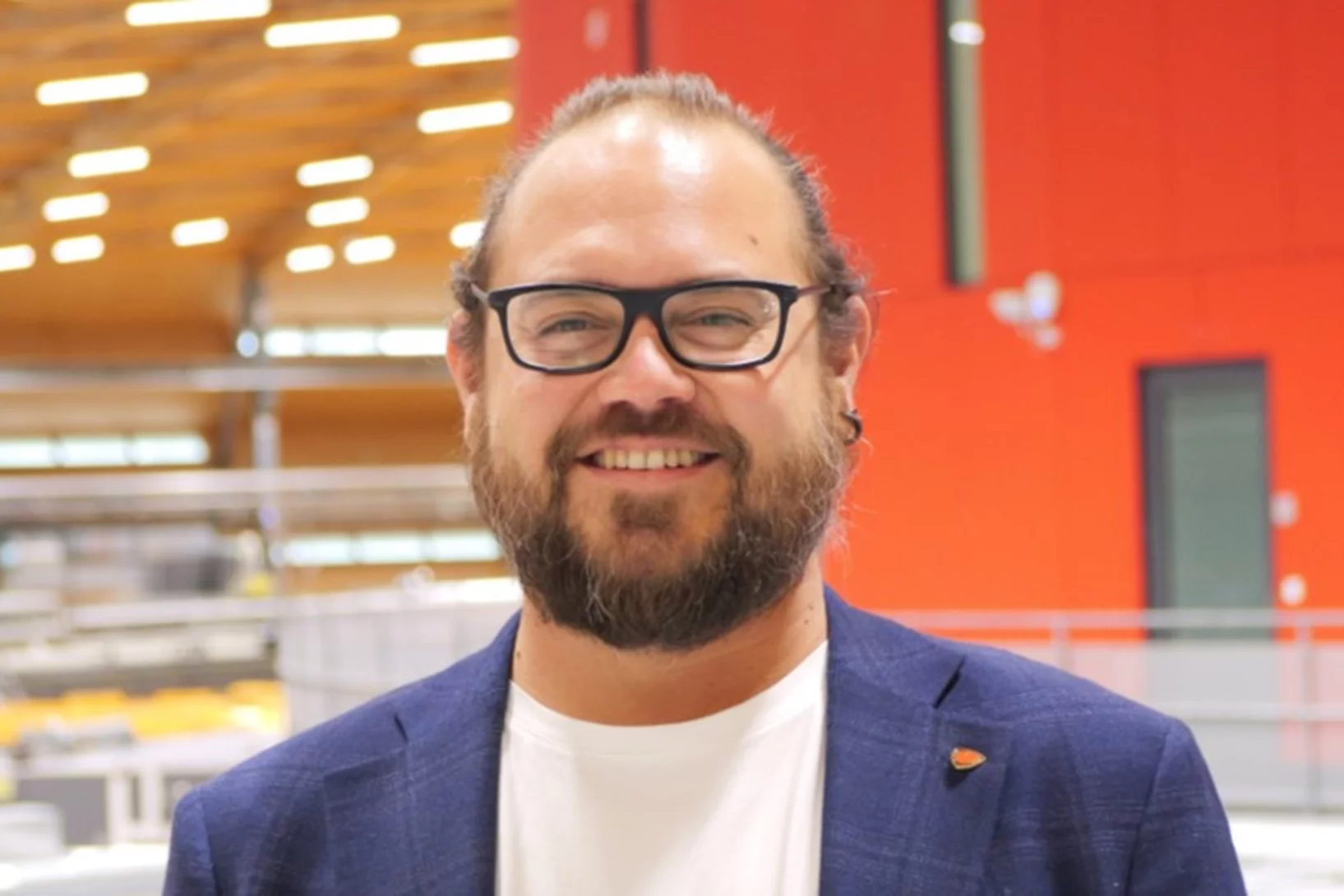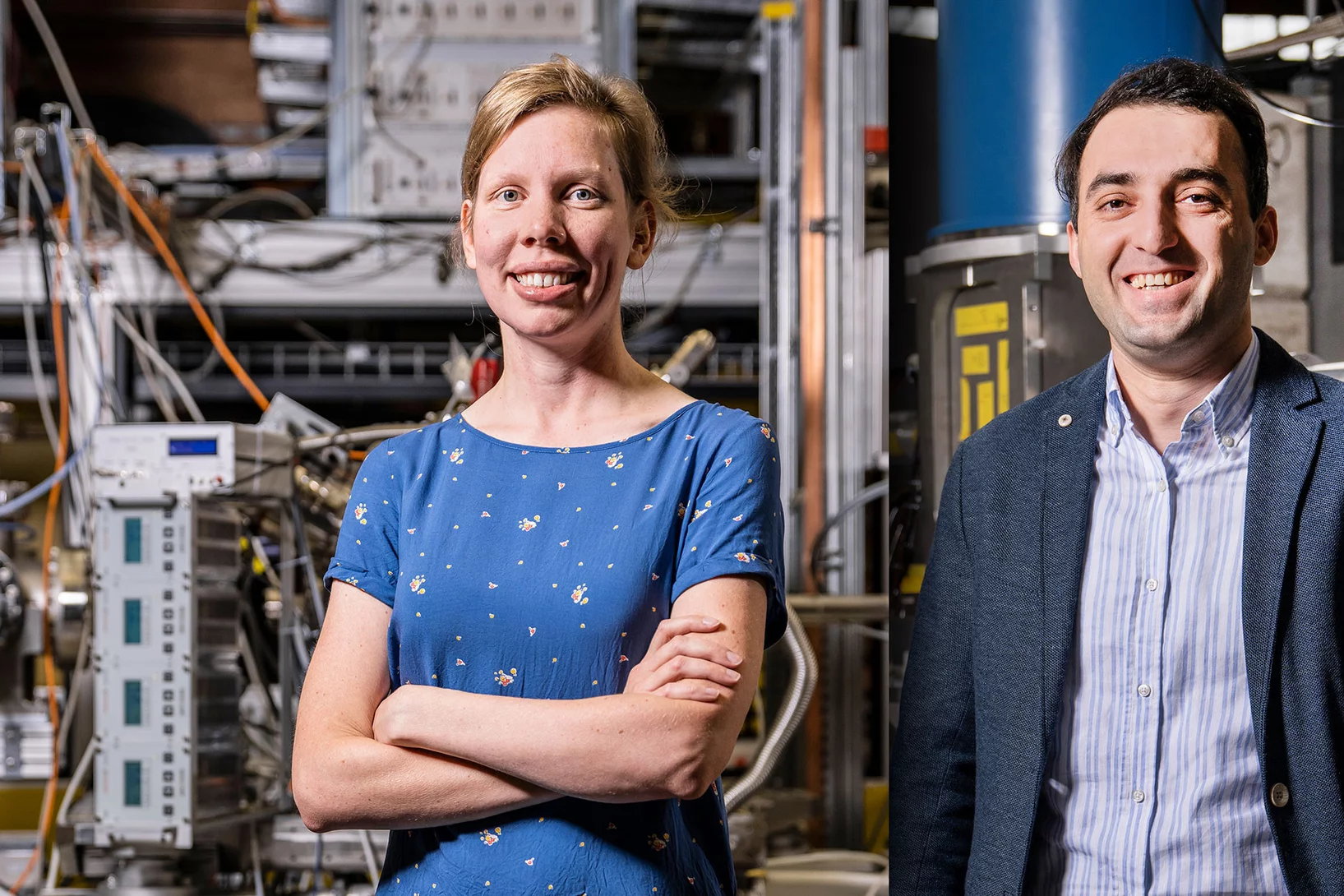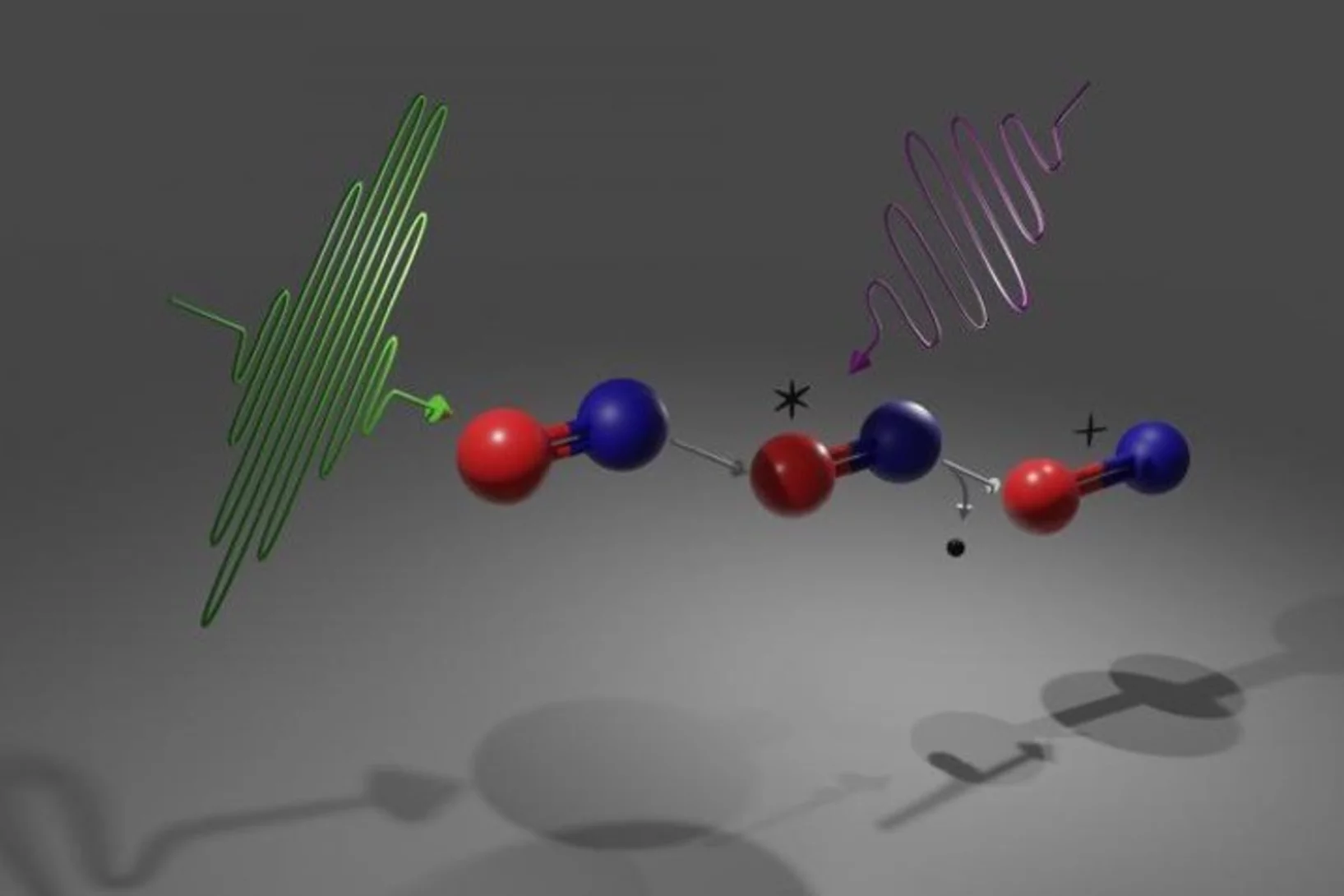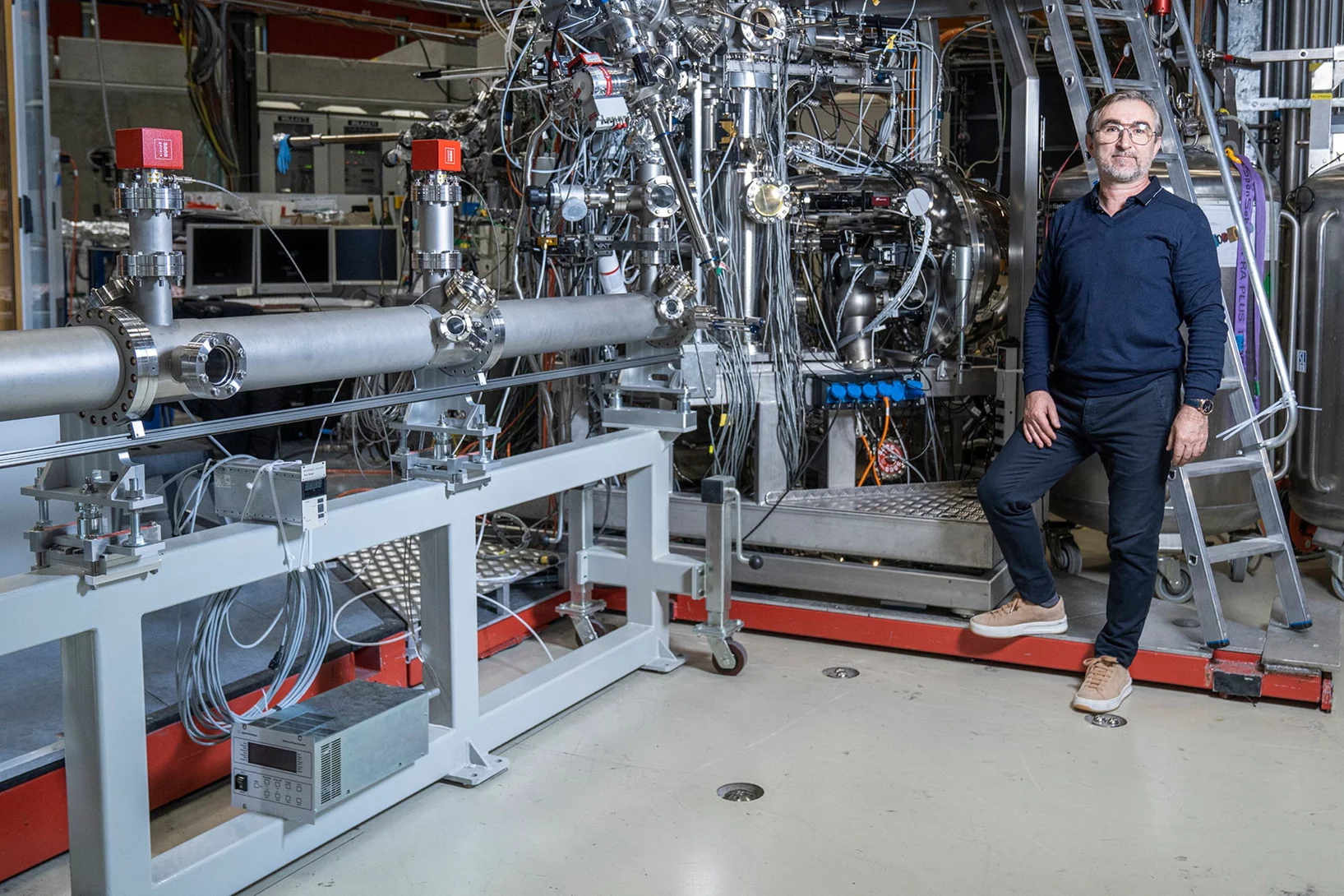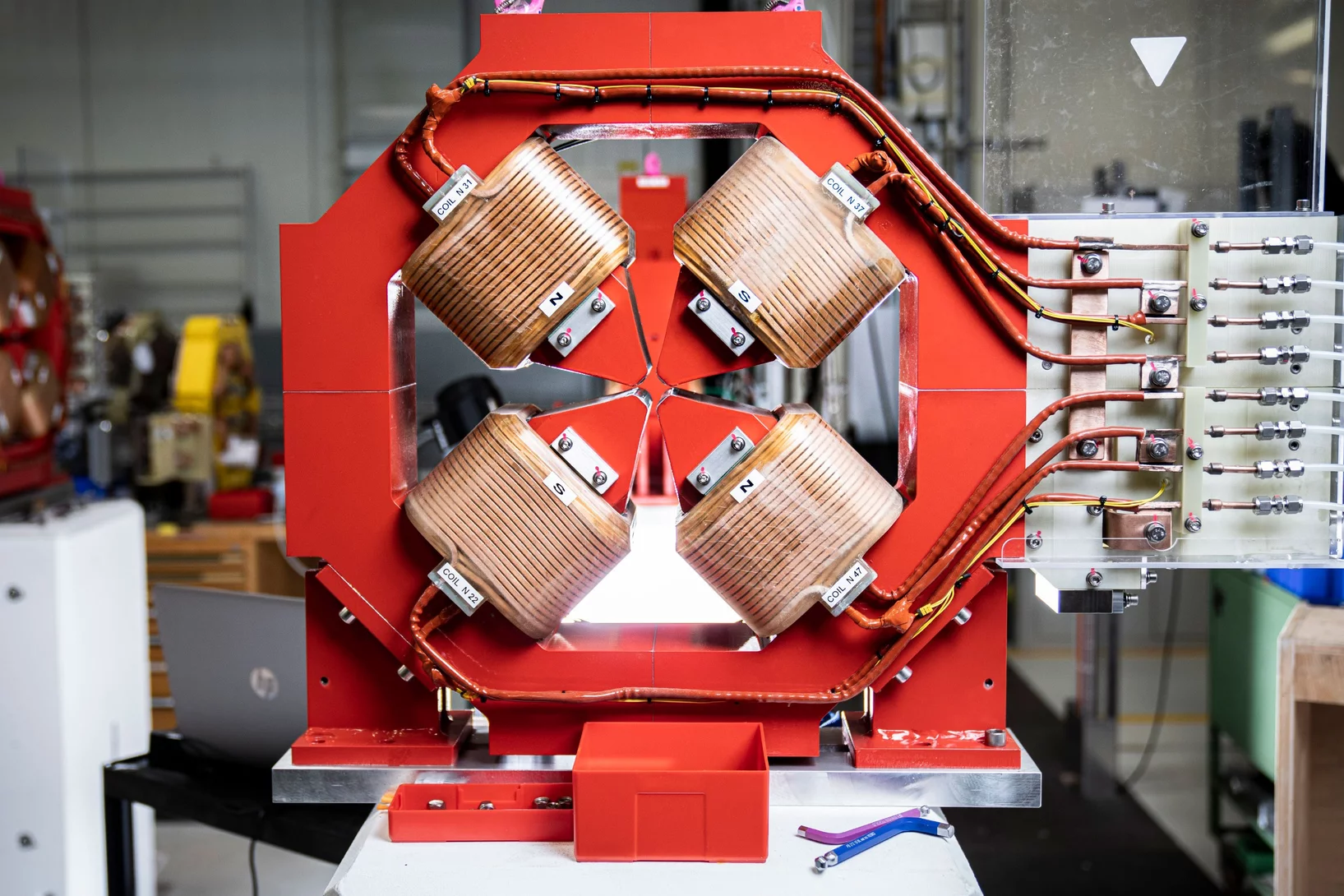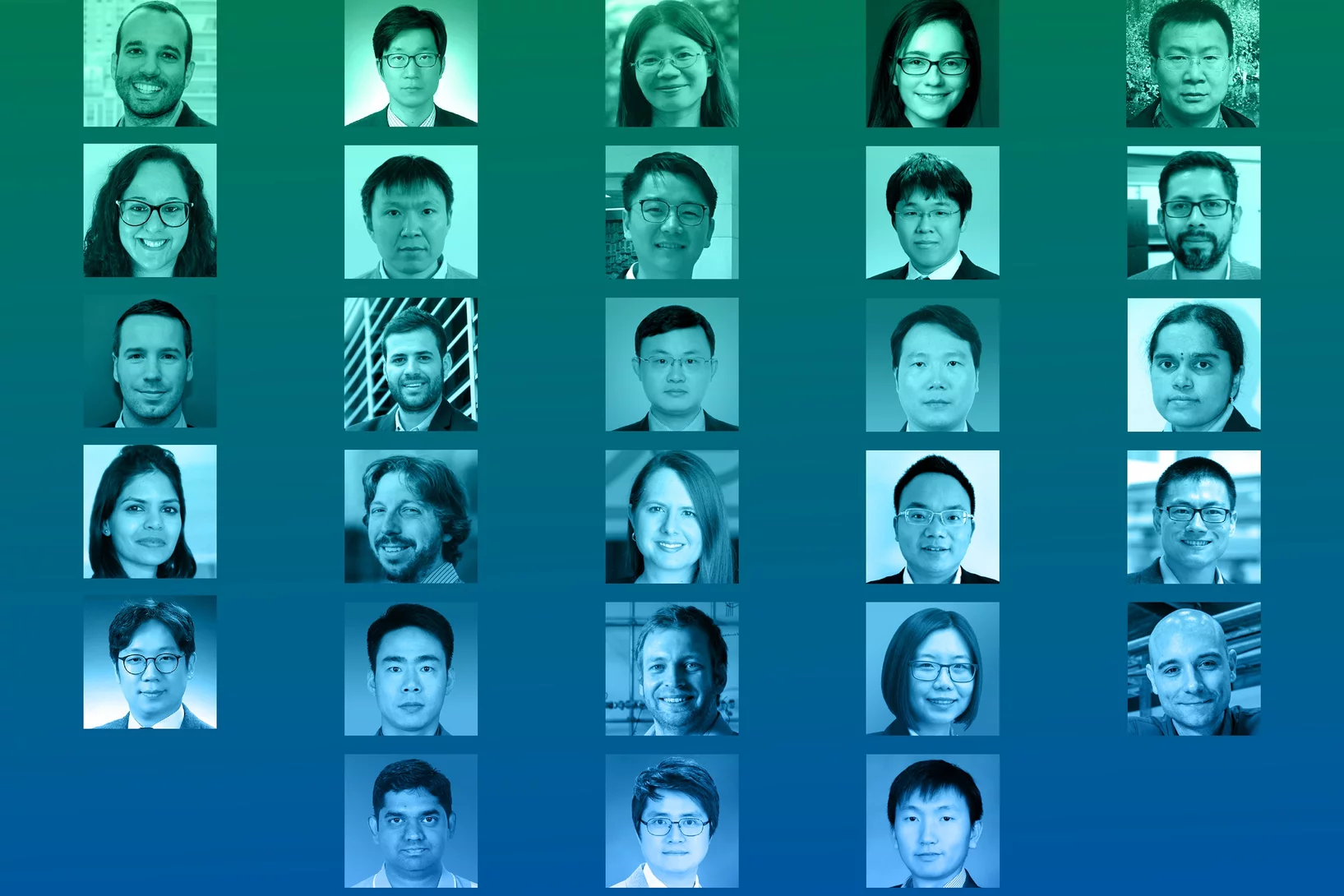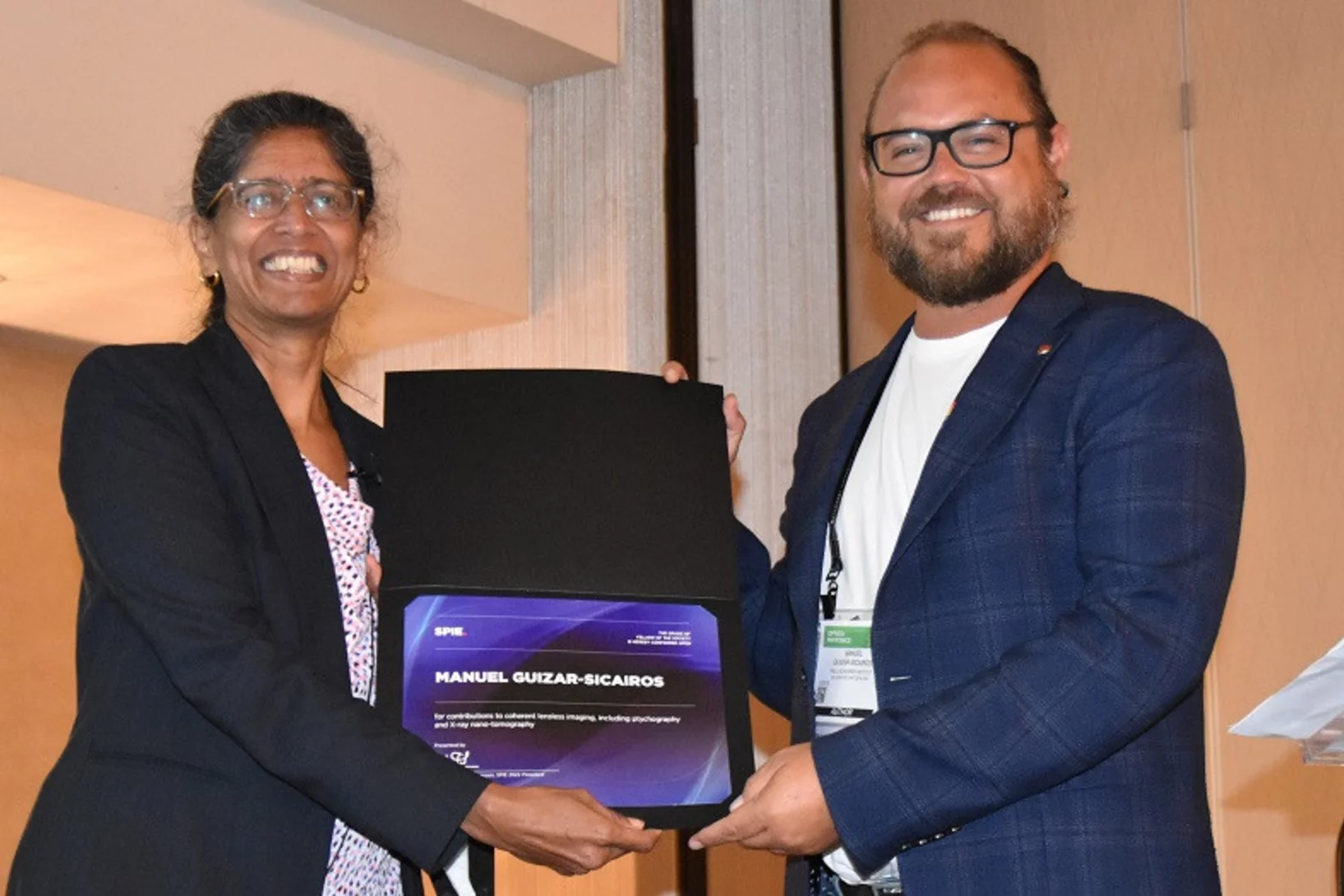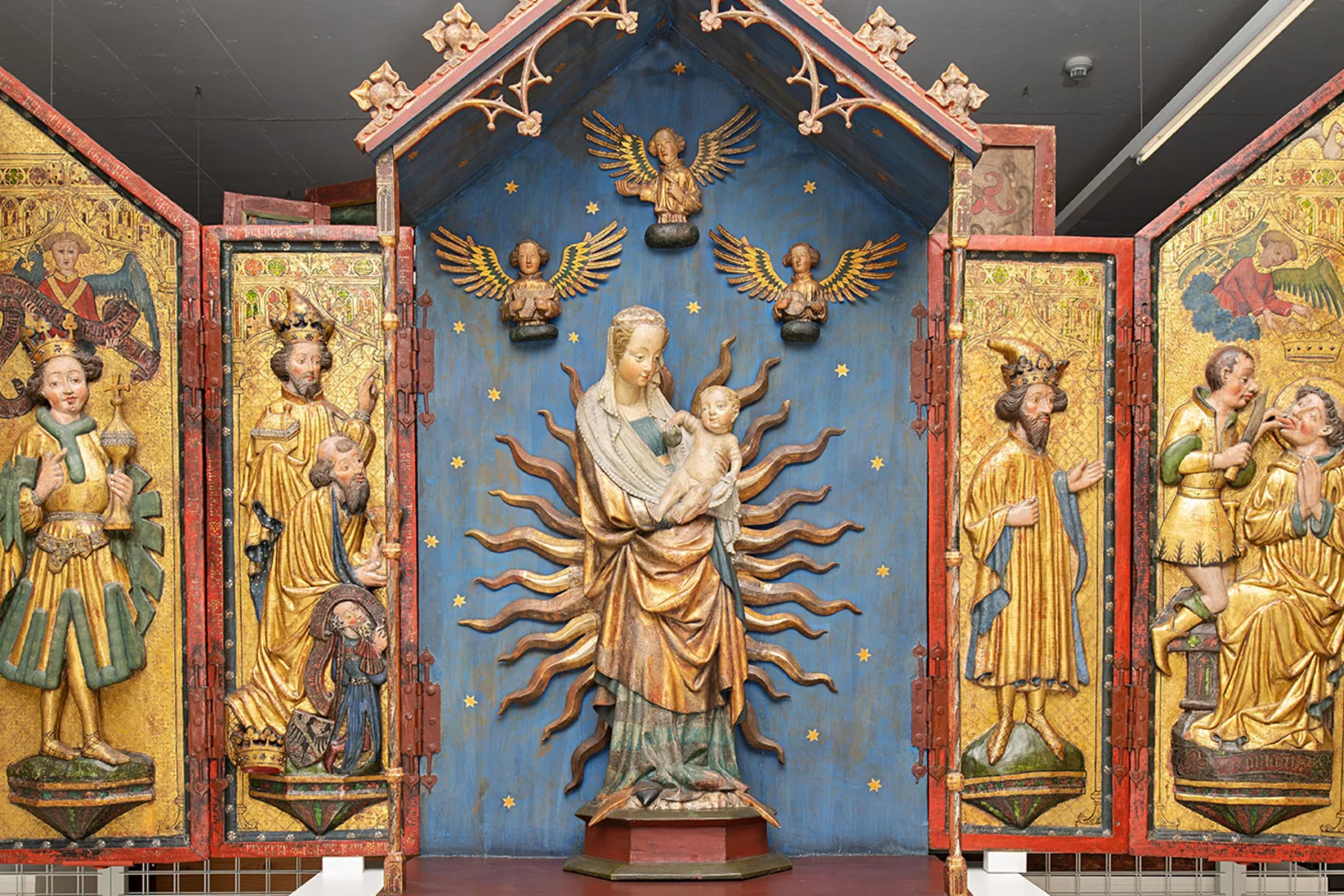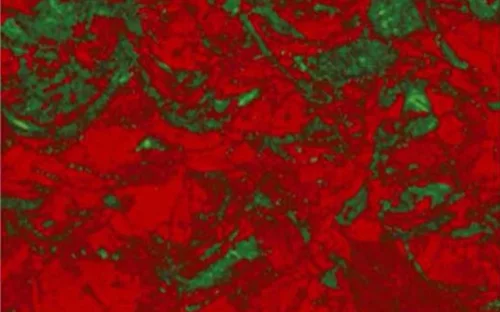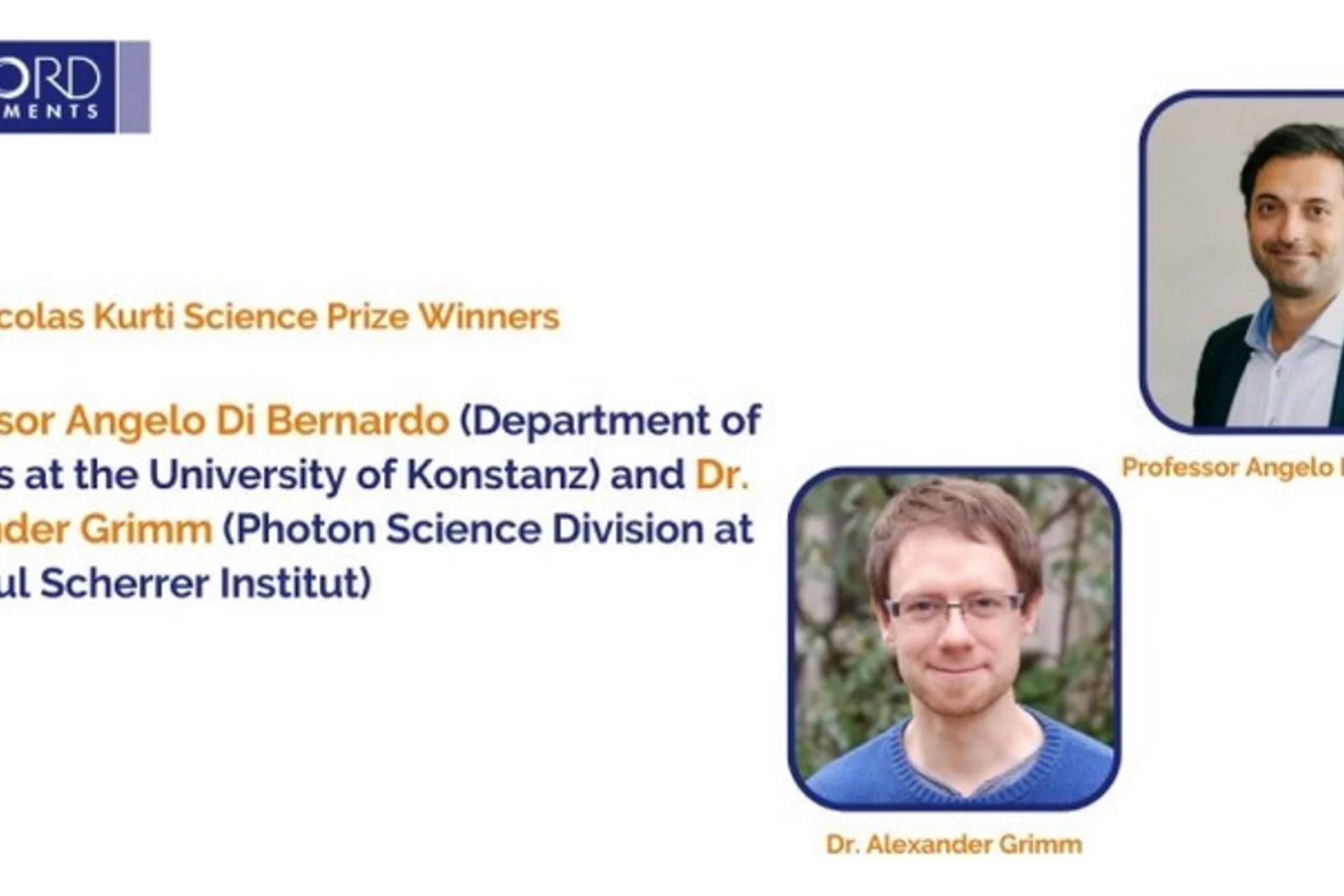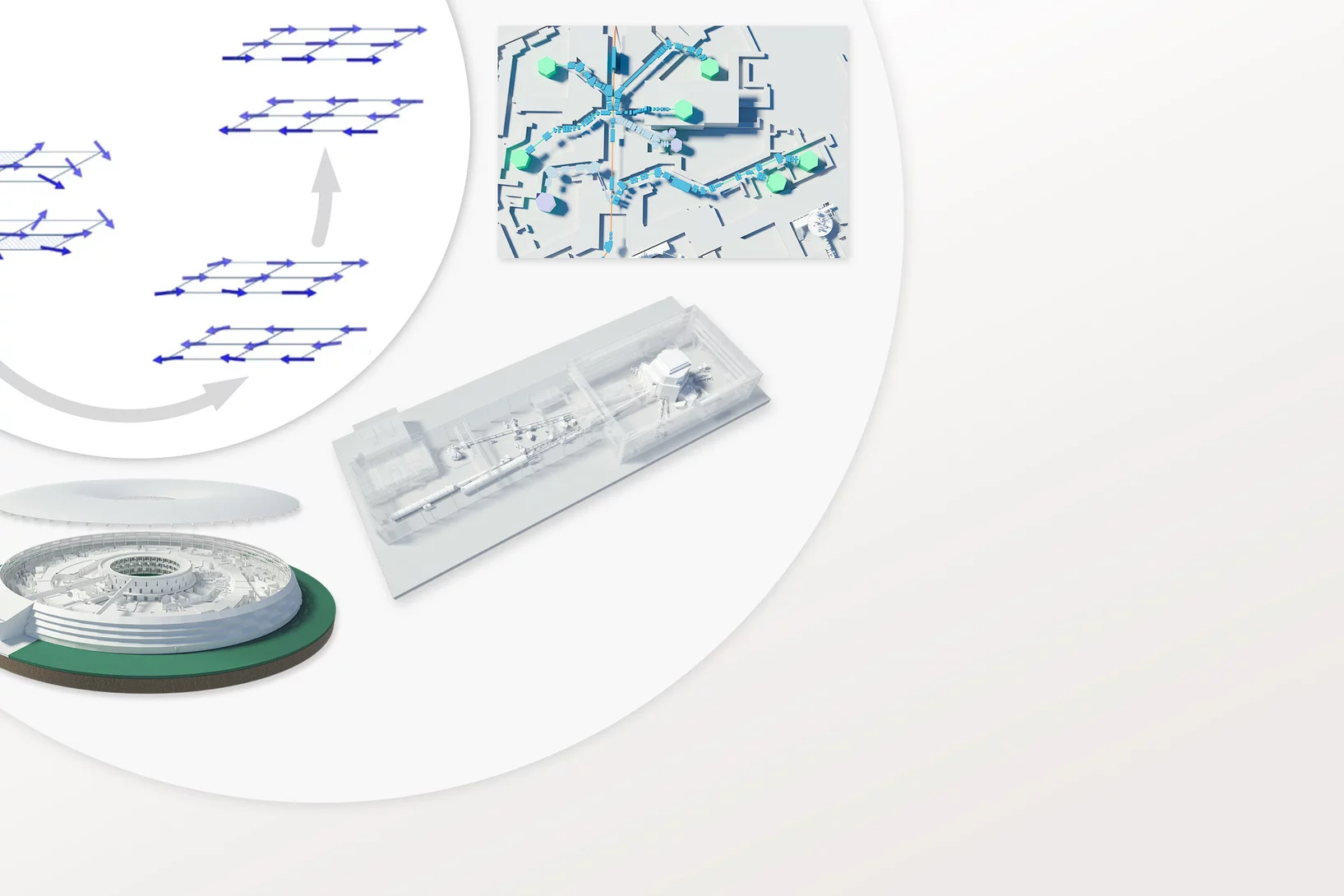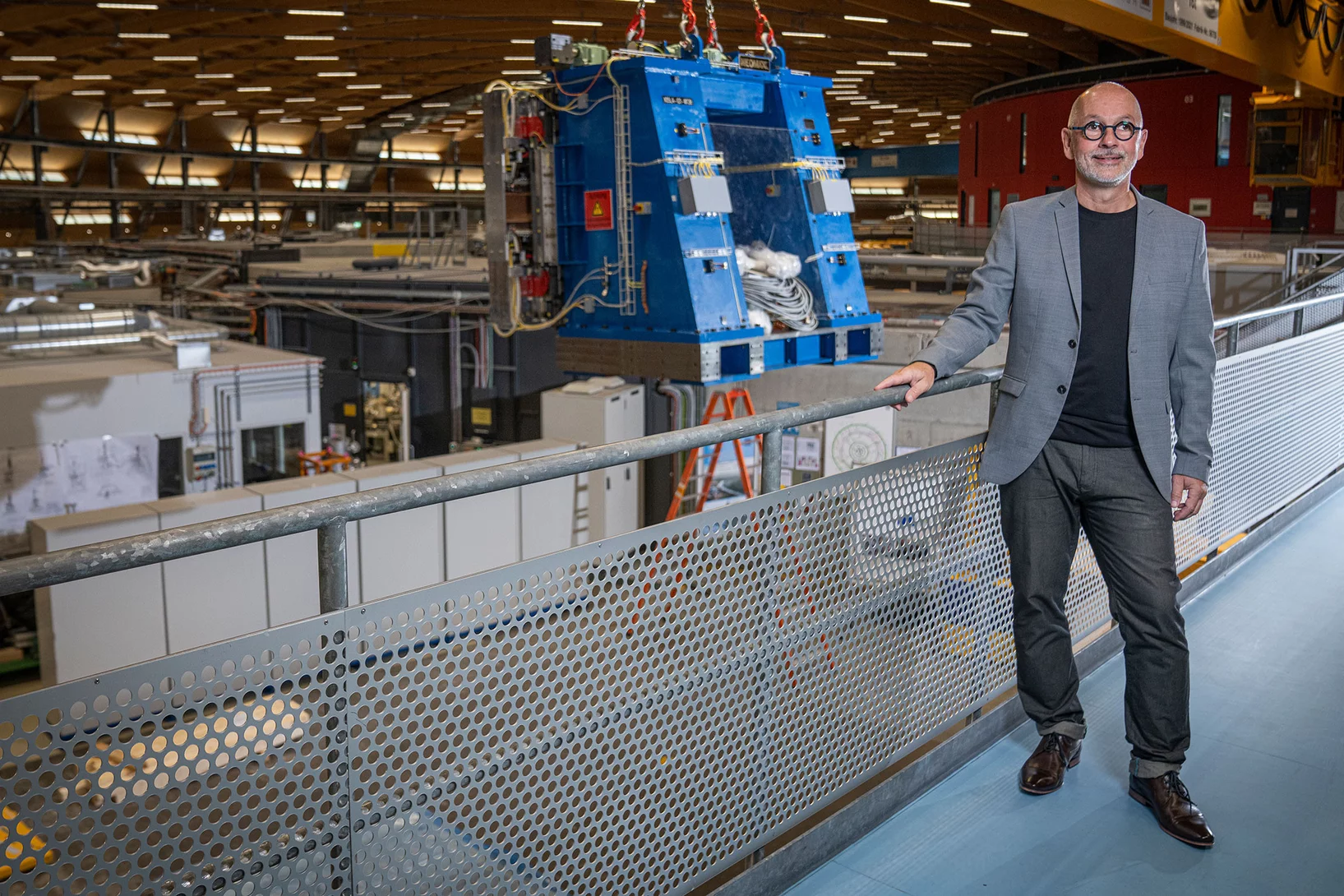Show filters
Tender X-rays show how one of nature’s strongest bonds breaks
Short flashes of an unusual kind of X-ray light at SwissFEL and SLS bring scientists closer to developing better catalysts to transform the greenhouse gas methane into a less harmful chemical.
500 Vakuumkammern für den neuen Ring
Wie die Röhre entsteht, durch die nach dem Upgrade-Projekt SLS 2.0 die Elektronen sausen werden.
Mirror, mirror on the wall…
…. Now we know there are chiral phonons for sure
Neues Verfahren für noch kompaktere Computer-Chips
Forschende des PSI nutzen extremes UV-Licht zur Herstellung winziger Strukturen für die Informationstechnologie.
Ein Algorithmus für schärfere Protein-Filme
Mit einem neu entwickelten Algorithmus lassen sich Messungen an Freie-Elektronen-Röntgenlasern effizienter auswerten.
Dr Christian Wäckerlin is appointed as assistant professor at EPFL
Dr Christian Wäckerlin (*1983), currently Research and Teaching Associate at EPFL and Project Leader at the Paul Scherrer Institute (PSI), as Assistant Professor of Physics in the School of Basic Sciences. Christian Wäckerlin’s research focuses on nanoscience and quantum engineering.
A deep look into hydration of cement
Researchers led by the University of Málaga show the Portland cement early age hydration with microscopic detail and high contrast between the components. This knowledge may contribute to more environmentally friendly manufacturing processes.
Apochromatic X-ray focusing
A team of scientists from the Paul Scherrer Institut, the University of Basel and DESY have demonstrated the first-ever realization of apochromatic X-ray focusing using a tailored combination of a refractive lens and a Fresnel zone plate. This innovative approach enables the correction of the chromatic aberration suffered by both refractive and diffractive lenses over a wide range of X-ray energies. This groundbreaking development in X-ray optics have been just published in the scientific journal Light: Science & Applications.
Quality control of future transistors: Tackling the challenge of looking at atoms buried in silicon without moving them
Tackling the challenge of looking at atoms buried in silicon without moving them
Röntgenblick nach Herztransplantationen
Synchrotronlicht hilft dabei, nach einer Herztransplantation zu beurteilen, ob und wie stark der Körper das neue Organ abstösst.
The Hercules School visits PSI
20 international students visited PSI as part of the renowned Hercules School to learn about our state-of-the-art techniques and methodologies at our large scale facilities.
So entstehen Fussballmoleküle im Weltall
Ein internationales Forscherteam zeigt, wie sich Fullerene im Weltall bilden.
A star is born
Swiss Light Source SLS reveals complex chemistry inside ‘stellar nurseries’
Medikamente mit Licht an- und abschalten
Forschende des PSI drehen einen molekularen Film eines Krebsmedikaments mit Lichtschalter. Das eröffnet neue Einblicke für Wirkstoffentwickler.
IEEE Early Career Award 2022
For contributions to the development of detectors for XFELs and specifically for their verification, characterization, and calibration
Swiss PIC unterstützt die Schweizer Photonik-Industrie
Das Technologietransferzentrum Swiss PIC wird im Park Innovaare angesiedelt sein.
Manuel Guizar-Sicairos appointed as Associate Professor at EPF Lausanne and head of the Computational X-ray Imaging group at PSI
Dr. Manuel Guizar-Sicairos, currently Senior Scientist at PSI, was appointed as Associate Professor of Physics in EPF Lausanne and head of the Computational X-ray Imaging group in PSI.
3,1 Millionen Förderung für neue Forschungsprojekte am PSI
Die beiden PSI-Forschenden Zurab Guguchia und Kirsten Schnorr erhalten vom Schweizerischen Nationalfonds Förderbeiträge von insgesamt 3,1 Millionen CHF für zukunftsweisende Projekte.
Tracking chemical bond changes with element selectivity and in real time
X-ray photoelectron spectroscopy probes the chemical environment in a molecule at a specific atomic site. Now the concept is extended with a site selective trigger to follow chemical bond changes as they occur on the femtosecond time scale.
Neue Materialien für den Computer der Zukunft
Forschende identifizieren und untersuchen Materialverbindungen, deren spezielle Eigenschaften neuartige Mikrochips möglich machen könnten.
On-track for SLS2.0: First magnet series measured
Successful measurement of the first 112 magnets puts the PSI magnet section on-schedule to measure all of the 1000+ magnets needed for SLS2.0 by July 2024.
PSI researcher Patrick Hemberger honored in the Rising Stars special issue in Energy & Fuels
To celebrate contributions of highly influential early and mid-career researchers in energy research, the journal Energy & Fuels established an annual recognition of Energy and Fuels Rising Stars.
Dr. Manuel Guizar-Sicairos elected as SPIE Fellow member
Dr. Manuel Guizar-Sicairos was elected as a 2022 SPIE Fellow Member for his contributions to coherent lensless imaging, including ptychography and X-ray nano-tomography. The distinction was awarded in the SPIE’s Optics & Photonics conference in San Diego, California.
Nanomaterial aus dem Mittelalter
Das Geheimnis des Zwischgolds wurde am PSI gelüftet.
In situ alloying during additive manufacturing
In situ alloying is an effective method to engineer microstructures of additively manufactured Ti6Al4V3Fe alloys.
Alexander Grimm wins 2022 Nicholas Kurti prize
We are happy to announce that Alex has been awarded the 2022 Nicholas Kurti Science prize. The prize recognises his work on non-linear effects in Josephson junctions for quantum information processing.
Capturing control errors in quantum annealing
The real-world application of this type of quantum computing gets one step closer with a new method to capture errors while qubits are talking to each other.
Three PSI research facilities reveal magnetic crossover
Insights from the Swiss Muon Source, Swiss Spallation Neutron Source and Swiss Light Source reveal this coveted characteristic in an exotic layered material.
Ein Stück PSI-Geschichte geht auf grosse Fahrt
Auf zu neuen Ufern – eine Hightech-Komponente vom PSI befindet sich auf dem Seeweg nach Australien und soll künftig im Australian Synchrotron in Melbourne zum Einsatz kommen.
Seltsames Fossil ist nicht unser Vorfahre
Röntgenlicht löst ein Rätsel der menschlichen Abstammung
